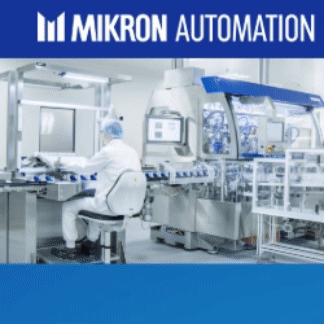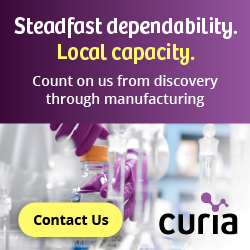Secondary Packaging – How “One-Stop-Shop” Solutions Can Help Address a Changing World
By: Daniela Geiger, Vetter, Product & Service Manager
In a rapidly aging world, it could be difficult for today’s pharmaceutical and biotechnology companies to keep pace with market demands. And no wonder! Projections of the numbers of individuals aged 65 and older are expected to be more than double that of children aged 5 by 2050. And while this trend is primarily affecting Europe, some Asian and Latin American countries are also experiencing rapid growth. This trend has led to an increase in chronic diseases, such as diabetes and osteoporosis and in turn, a demand for safe, easily administered injectable drugs. At the same time, the vexing issue of drug counterfeiting, estimated to be costing the industry anywhere from $75 to $200 billion, continues to grow. Drug counterfeiting can make up nearly half of all drugs sold in some lower income nations, adversely affecting tens of thousands of lives. Is the industry prepared to respond to the needs of this changing world? Can secondary packaging provide solutions?
Complex Compounds Demand Innovative Secondary Packaging
To help drug companies make the right choice of packaging when developing their drug product in a patient-friendly system, they often look for support from experienced partners like a contract development and manufacturing organization (CDMO). CDMOs have the ability to deal with highly sophisticated and complex drug compounds and have a high level of knowledge in supporting a company through the entire lifecycle and production process of a compound. An experienced CDMO can offer a “one-stop-shop” solution that makes it possible to optimize the process from clinical development to commercial filling and secondary packaging. The innovative delivery options they offer can also add value at the clinical and commercial stages, helping companies deal with the challenges of complex compounds such as silicone sensitivity and reduced particle load.

Packaging solutions like pens and autoinjectors can also add value in achieving product differentiation and are valuable tools in supporting life cycle management from launch to the late stages of its life cycle. In fact, making secondary packaging changes to a proven product can make a big difference in the market, addressing a range of both market and regulatory needs and give a product new market potential. In addition to meeting the need for patient-friendly user systems and safety regulations, secondary packaging can also help comply with changing regulatory requirements.
Combating Drug Counterfeiting With Serialization
In addition to providing valuable support in secondary packaging for complex compounds, CDMOs can also help battle drug counterfeiting. Regulatory agencies have been seeking and implementing new methods to thwart counterfeiters and agree that a clear means of verification and identification of products through a process known as serialization is the right action to take. Serialization involves the assignment and application of a unique identification code to a product with each saleable unit. Pallets upon which the cases are packed are also assigned a unique identifier, and the integrity of the packages is also protected with tamper indicators like pre-perforation, glue points, or safety labels.
Due to the importance of eliminating drug counterfeiting, many countries have already adopted regulations requiring the enactment of serialization. By 2019, the majority of the global drug supply will essentially fall under some form of serialization requirement. Countries that have already implemented this program include Turkey, India, Argentina, South Korea, and Saudi Arabia. China started the implementation of serialization by the end of 2015. However, they have placed a hold on their phased implementation of serialization regulation, and the industry is still waiting for final guidance. In the US, full implementation of serialization was originally required by November 2017. However, newly released guidelines offer a 1-year reprieve for manufacturers that have not integrated product identifier requirements by the original deadline. This reprieve is also extended to trading partners who may wish to purchase products without a product identifier prior to November 2018.

As with any new system or regulations, there are usually impediments to adoption and implementation. Pharmaceutical and biotechnology companies, as well as their manufacturing partners must always remain well informed about the current information as it pertains to timeliness, different country requirements, and any changes that may arise. CDMOs with a packaging service have to be well prepared for a shortened timeframe for serialization projects. The main challenges for manufacturers in managing such a project can vary, particularly if the drug product is supplied to several markets. Choosing a CDMO that can offer flexible serialization services allowing for a rapid and efficient response to these variations seems to be a promising option for achieving success in enacting serialization.
A CDMO must be adequately invested in programs, technology, and expertise vital for the safety of the patient and the integrity of the product. Also important is the existence of a pipeline for investment in future-oriented techniques and approaches and demonstration of a long history of supporting customer and regulatory serialization demands. Because implementation of a serialization service is a comprehensive project, a well-defined strategy that begins with a concept study to start the project is essential. The CDMO should also have an established and solid cross-functional project team consisting of all the necessary departments including IT, engineering, production, supply chain, quality, regulatory affairs, and project management.
In Conclusion: One-Stop is Usually the “Right Stop”
Changing markets often require rethinking of a drug product’s packaging. Whether it is meeting the needs of a rapidly aging market or doing battle with drug counterfeiters, a secondary packaging program is most often the answer. One-stop-shop solutions make it possible to realize the entire process. The choice of a highly qualified CDMO with significant expertise in dealing with complex drug products can help a company make the right choice of packaging when developing their drug product. It can also develop a program and offer technological support to help fight the growing problem of drug counterfeiting, and this help to save lives of patients at the end of the day.
 Daniela Geiger is a Product & Service Manager at Vetter Pharma International GmbH. She earned her MBA in International Business Development from the ESB Business School Reutlingen, Germany. She started her career path in the pharmaceutical industry in 2003 contributing to different areas of the business in Latin America and Europe. She joined Vetter in 2011, where she is responsible for the secondary packaging, serialization, and sterile water for injection services.
Daniela Geiger is a Product & Service Manager at Vetter Pharma International GmbH. She earned her MBA in International Business Development from the ESB Business School Reutlingen, Germany. She started her career path in the pharmaceutical industry in 2003 contributing to different areas of the business in Latin America and Europe. She joined Vetter in 2011, where she is responsible for the secondary packaging, serialization, and sterile water for injection services.
Total Page Views: 1189













